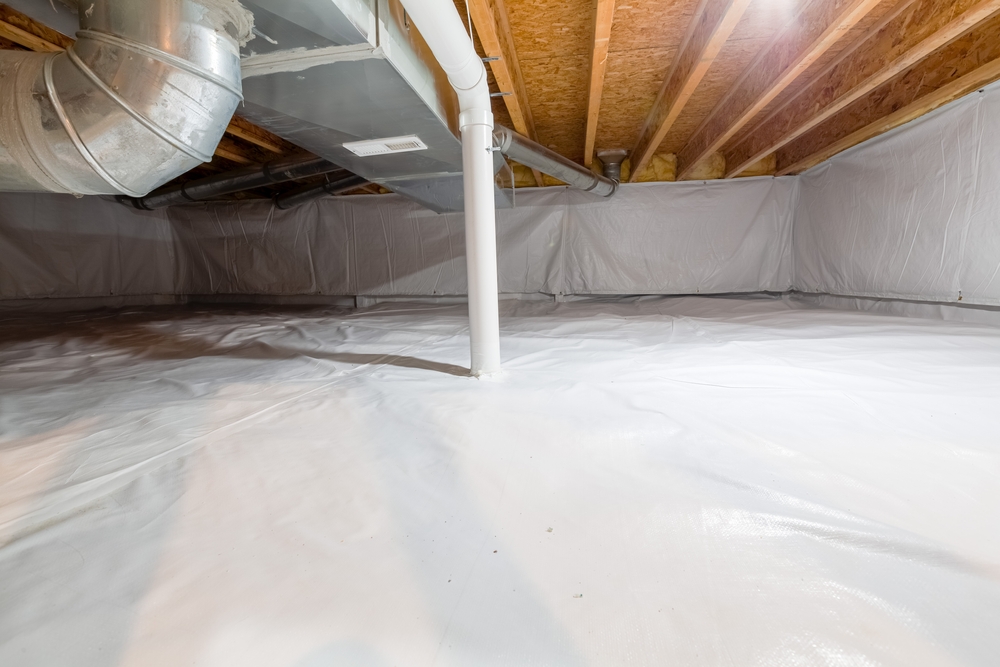What You Need to Know About Crawl Space Insulation
Insulating a crawl space can help improve your home’s energy efficiency and protect pipes from freezing as well as structural damage. When installing insulation, you are investing in the long-term health of your living space and can possibly generate savings because of it.
Is Crawl Space Insulation for Everyone?
Not all homes require crawl space insulation. Depending on the size of the crawl space and the climate where you live, considering these factors can help you make a final decision.
For example, a home in an extreme-temperature state like Alaska or Arizona would benefit far greater from an insulated crawl space than one in a more temperate part of the country like South Carolina. As a general rule of thumb, you might want to consider insulating your crawl space if your state experiences freezing temperatures in the winter and/or high-heat summers.
My Crawl Space is Encapsulated. Does that Provide Insulation?
Crawl space encapsulation can provide some minor level of defense against the elements. However, these solutions are not often designed with insulation as a primary goal. Using a separate insulation method would provide more complete protection.
What Happens if I Do Not Insulate My Crawl Space?
As we mentioned above, climate often determines the need for insulation. If you live in an environment that experiences extreme temperatures, you can risk damaging your home by not insulating.
Common Risks for Cold Weather
Frozen pipes pose the largest risk for crawl spaces in climates with freezing temperatures. If pipes freeze and break, this can result in costly repairs that require a large span of time to correct.
Common Risks for Hot Weather
Extreme hot weather can dry out woods in your home (such as floor joists in the crawl space) and shrink the soil around your foundation. If you live in a hot climate with high humidity, you can also risk moisture damage to the woods in your home that might be exposed in the crawl space.
What Are Some Common Types of Crawl Space Insulation?
There are a few varieties of crawl space insulation available on the market. Here are some common types that you might encounter:
Fiberglass
The original solution for insulating crawl spaces, fiberglass batt insulation is the cotton-like pink material that is found in many attics and crawl spaces around the world. While it looks soft, it contains many glass fibers that are inserted between the floor joists above the crawl space. While it is easy to obtain and rather affordable, it is susceptible to microbial growth and moisture damage.
Foam Board
Foam boards are placed up against the crawl space to insulate against moisture and protect against temperature-related damage. However, these boards can often be difficult to install around other objects near the wall. In many cases, an installation specialist will cut pieces of the board around the obstacles and fill in the spaces with smaller portions of foam board or with an appropriate spray solution.
Closed-Cell Spray Foam
Closed-cell foam is applied to gaps in the crawl space ceiling and walls to fill gaps and create a tight vapor barrier. While it is an extremely durable, permanent option, it can be expensive and cannot be easily replaced with something else.
Open-Cell Foam
Unlike closed-cell, open-cell spray foam does not create a vapor barrier nor does it protect against moisture. Its best application is for quickly filling gaps in walls.
Call a Professional to Insulate Your Crawl Space
If you want to insulate your crawl space and protect it from the elements, the best option is to contact a professional to assist you. An installation specialist will apply the most suitable solution to your crawl space and ensure that it is adequately covered.
At DryTek Environmental, we insulate crawl spaces for homeowners across Eastern Maryland. To learn more about our services, contact us anytime.


